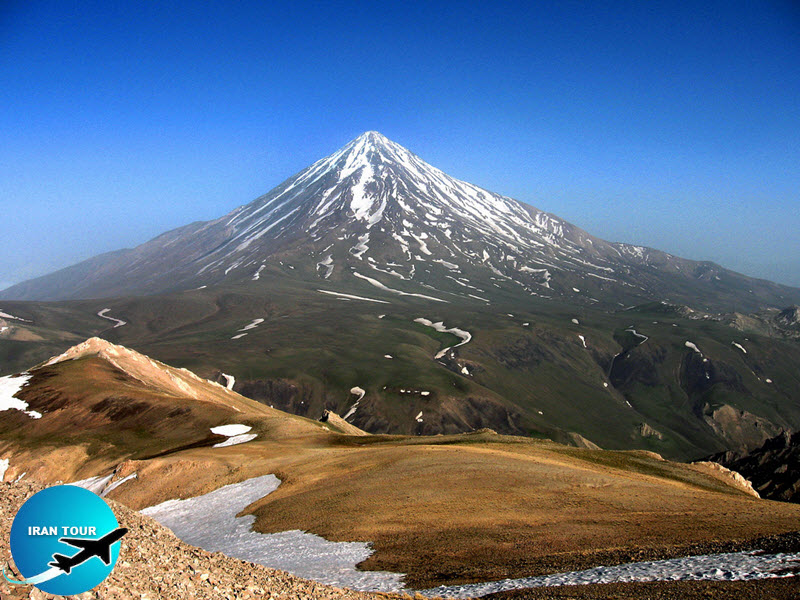Copyright 2020 - 2021 irantour.tours all right reserved
Designed by Behsazanhost
The Iranian Plateau and the Zagros Mountains
The Iranian Plateau and the Zagros Mountains
IRAN is an enormous plateau surrounded by gigantic mountains. The interior of this virtual fortress, the lofty battlements of which almost totally exclude the passage of rain clouds, is a rocky wilderness, almost a desert. The outer provinces are humid and fever is rampant. For several months of the year, they suffer from intense heat. In the absence of easy communications, the rural centers are mainly villages or agricultural market towns, sometimes still surrounded by ancient defensive walls
 |
| THE ZAGREUS MOUNTAINS |
The principal towns lie on the plain, at the foot of the mountains on the periphery, along with an irregular line of oases which have formed or been exploited at the mouths of spring torrents and streams from deep ravines where the winter snows melt slowly. However, these oases are few in number and small in size and although Isfahān-an exception has become a large industrial town, the chief manufacturing town of Iran, it is because it has a river, the Zanda Rūd, which is almost dry in summer, but is a river nevertheless. In an attempt to increase its volume, part of the course of an affluent of the River Kärūn, which rises nearby, has been connected with it. A few years ago, Teheran, the capital of Iran, where large-scale works for increasing the water supply are now going on, was only able to exist thanks to some forty underground culverts called qanats, which brought water from sources in the Alburz Mountains about eleven miles away. Yazd, another industrial town, is supplied in the same primitive fashion. Kirman, Gulpãygān, Sāwi, Dāmghān, Samnān, etc., are even worse off for water.
 |
| DAMAVAND PEAK 5660 M |
In other words, there is a constant shortage of water on the Iranian plateau and the small amount there is found only in the narrow fringe of vegetation that runs along the foot of the more important mountain ranges; even then it is frequently only represented by scattered green patches on the edge of the desert. But in the ranges of mountains around the edge of the plateau, especially in the Alburz and Zagros (Zagros) ranges to the west and north of Iran, there are enormous, beautiful valleys. They are richly endowed by nature and in them, a great part, much more than was previously believed, of the ancient history of Iran unfolded. The Zagros range, about 725 miles long and more than seventy-five miles wide, is made up of regular parallel folds of more or less the same height. They are separated by depressions thirty or even sixty miles long, which are sometimes as much as fifteen miles wide. The only means of communication between them is by precipitous paths, where only skilled mountaineers dare venture and pass at a height of more than 9,000 feet.
 |
Every kind of extreme of climate can be found there, from the stifling heat of the low valleys to the acute cold of the perpetually snow-clad peaks. As a result, therefore, of these variations in altitude. which make it possible to grow the most varied crops, as a result of the rainfall on the slopes of the mountains which face towards the sea, and the heat which this region experiences because of its comparatively southerly latitude, the Zagros range, which will be frequently mentioned in the first part of this book, is a region of multiple resources, suitable for raising livestock in every season. But the exploitation of these resources imposes a very special way of life on the inhabitants of the region. As soon as spring comes the heat drives the flocks and their keepers from the low valleys, where they have spent the winter, and forces them to make for the peaks where they stay until the late autumn snows send them down again. Nomadism is the rule in these mountains; not, of course, fundamental nomadism, when whole tribes are constantly on the move with their flocks in search of subsistence, but what we might call localized nomadism (or transhumance), from the mountains to the valleys and vice versa. In addition, only a part of the population of the tribes accompanies the flocks when they move. The old people, young children, and the infirm are settled, as are, more or less continuously, the craftsmen; weavers, smelters, blacksmiths, leather dressers, goldsmiths, and farmers. As a rule, they live fairly high up in the mountains, at about 4,500 feet, the level of staple crops, around vastly organized sites where the shepherds and their flocks stop and rest on their way up or down. There is no doubt that, towards the end of the second millennium BC, a great number of the famous Luristān bronzes were executed up there, in these villages which controlled comings and goings in the mountains.
- Details
- Category: IRAN Blog